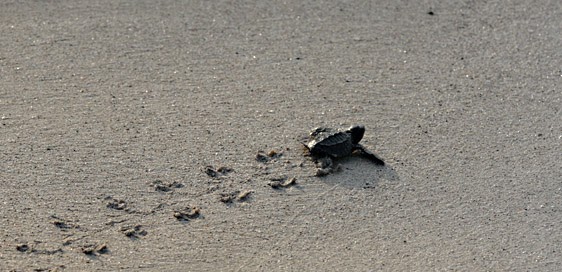by Marcela Torres
It was January 2000 and my dad and I were
sitting on top of a rocky promontory in Torres del Paine National Park, in
southern Chile, withstanding the strong, cold Patagonian winds that pierced
through our parkas, gloves, and hats. But we were on a mission: To photograph
the elusive Andean Condor.
We were fortunate enough to stay at a park
ranger post, where the staff gave us tips on the best spots to find the Condor.
Since this is a scavenger bird, they suggested we take with us some really
stinky cat food that would surely do the trick of attracting it to us.
Following their instructions, we trekked for
hours through the tall grasslands of the “pampa” to reach one of the hills they
had recommended. It was a rocky mount, completely barren, but after climbing it
we discovered it provided a great lookout point. There we sat, with our stock
of smelly cat food, and waited, and waited, and waited…
As we waited, I
remembered how we came to be there on the first place. In 1982, the BBC
produced one of my dad’s favorite documentaries, “The Flight of the Condor”.
Mind you, he got a copy and played it over and over again. Being just a girl, I
was more into cartoons and Michael Jackson videos, but I ended up liking this
incredible film about a bird that is a national symbol in most Andean
countries, including Chile, where we lived.
In fact, it wasn’t the
first time I had enjoyed a national park with him. My dad had been Regional
Director for CONAF, the agency in charge of Chilean protected areas, in Arica
between 1974 and 1985. As a child, I traveled with him many times to Lauca
National Park, in the high Andes, during his field visits. He taught me about
the Vicuña, the Flamingos, the Vizcacha, and the Condor.
It was so much fun
that I never paid attention to the cold and loved accompanying him while he
photographed nature, which was his passion. When I turned nine, he gave me my
first camera, a Polaroid that I still have, and taught me how use it. I was so
happy that I took pictures of everything!!
Thanks to him, my
family and I enjoyed living in Ann Arbor, Michigan; San José, Costa Rica; New
Haven, Connecticut; and Arlington, Virginia. This gave us some unforgettable
experiences, such as camping around the Great Lakes and visiting all of the
beautiful national parks in these areas.
Torres del Paine had
always been on my wish list. So, when he offered to take me in 2000, I said yes
immediately! And there we were, waiting for the condor…
A couple of hours had gone by and we had almost
lost all hope when suddenly, out of nowhere, a huge bird appeared flying
straight towards us. It was a Condor! We quickly ditched our gloves and grabbed
our cameras, getting ready to take great shots of this amazing animal. But in only
a few seconds it was right on top of us!
As it came, and we realized how low it was
flying, we instinctively leaned back until we lay flat on the rock. It was such an awesome sight, having this
massive bird glide only a meter above us, that we completely froze. We could
see all the details of its belly and the long wings. When we snapped out of our
awe, we realized we had not taken any pictures! So, we quickly rolled over on
our bellies and started shooting with our cameras to try to catch at least a glimpse
of the Condor. It was too late! We were only able to capture a tiny speck that
was quickly flying away from us towards higher altitudes.
We stayed there a while, letting the experience
sink in. It had been so amazing! Finally, we grabbed our cameras and the stinky
cat food and walked back to the park ranger post. At night, while we sat with
the rangers around a fire sharing a “mate” (muh-teh) –a typical Patagonia
herbal tea-, they laughed at our adventure.
My dad always supported my endeavors and often
contributed with photographs for my blog. He was a member of several professional
associations and chaired for many years the IUCN South American Camelid
Specialist Group, promoting the conservation of the vicuña until the end of his
life. I will continue contributing as well, honoring his memory.
He passed away on Saturday, February 18, 2017.
It is still so recent that it’s hard to believe… I still feel him close… He
will be with me forever… And my love and gratitude for all that he taught me
will remain…
HERNÁN TORRES BIO
Hernán held a Master of
Environmental Studies from Yale University and a Bachelor of Science in Natural
Resources from The University of Michigan, both in the United States. He was
Regional Director for CONAF (1974-1981 and 1984-1985); team
leader for protected areas management plans at the CATIE, in Costa Rica (1986-1988);
Protected Areas Specialist of The Nature Conservancy’s Caribbean Region
Department (1995-1998); and an accomplished international consultant in
protected area planning and management, sustainable development, ecosystem
services and biodiversity, working with multilateral agencies, such as the
UNDP, UNEP, World Bank and RAMSAR, and actively participating in IUCN
initiatives until the end.



